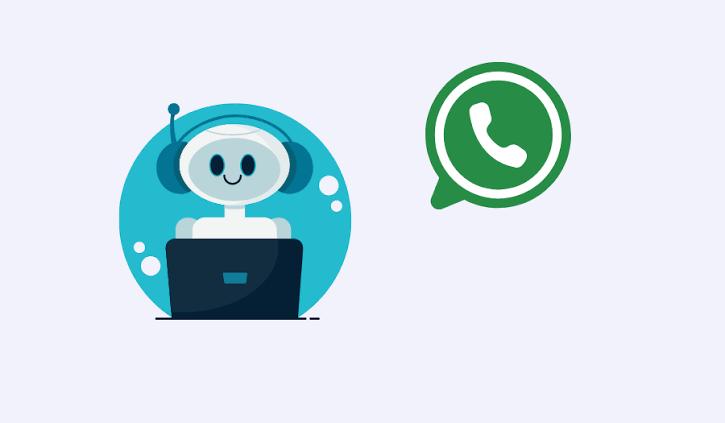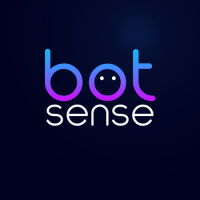Optimizing WhatsApp API Message Templates for Top Deliverability and Engagement in 2025

Strong 8k brings an ultra-HD IPTV experience to your living room and your pocket.
In 2025, reaching your audience on time matters more than ever. With inboxes full and users on the go, your WhatsApp messages need to land perfectly and inspire action. Optimizing your message templates is the key to making sure every notification, alert, or promotion gets seen and drives meaningful engagement.
This guide shows you how to craft, test, and refine templates using the WhatsApp Business API, powerful WhatsApp automation. workflows, and the intuitive dashboard from BotSense. Follow these steps to improve deliverability and create messages your users will love.
---
# 1. Know the Rules for WhatsApp Templates
WhatsApp enforces strict template guidelines to protect users from unwanted content. Before you start building templates, keep these rules in mind:
* Use approved placeholders like {{1}} and {{2}} for dynamic content
* Stick to permitted categories such as transaction updates, appointment reminders, and marketing messages with clear opt‑in
* Match your registered template text exactly to avoid rejections
* Plan for a 24‑hour review period by WhatsApp once you submit a new template
Understanding these requirements helps you avoid delays and keeps your messages in users’ inboxes.
---
# 2. Write Clear and Direct Opening Lines
The first line of your template is like a headline. It must grab attention and set the tone:
* Keep it under 30 characters when possible
* Highlight the main benefit or action
* Avoid jargon or fluffy language
**Example**
```
Hello {{1}} Your order {{2}} is ready
```
This line feels personal and prompts the user to read on.
---
# 3. Personalize with Dynamic Placeholders
Placeholders turn generic text into personal messages. Use them to insert:
* User names or greetings ({{1}})
* Order numbers, dates, or codes ({{2}})
* Links or contact details ({{3}})
**Example**
```
Hi {{1}} Your table for {{2}} at {{3}} is confirmed Reply YES to add to calendar
```
Always test placeholders in different languages to ensure they render correctly.
---
# 4. Keep the Body Short and Focused
Long messages can feel overwhelming on mobile screens. Aim for:
* One or two concise sentences
* A single objective, such as confirmation, reminder, or call to action
* No special characters that might break formatting
**Example**
```
Your invoice {{1}} is ready View and pay here {{2}}
```
This message covers everything in one line.
---
# 5. Add a Strong Call to Action
Every template should guide users to the next step. Options include:
* Reply keywords like YES, NO, or HELP
* Clickable links or buttons for payment or booking
* A phone number or email for support
**Example**
```
Your appointment on {{1}} at {{2}} is confirmed Need to cancel Reply CANCEL
This clear instruction reduces friction and boosts response rates.
# 6. Test Across Devices and Regions
Before you launch:
1. **Send to Test Numbers**
Check delivery and formatting across Android, iOS, and web clients
2. **Review Locales**
Ensure right‑to‑left languages and accented characters display correctly
3. **Track Delivery Codes**
Use your WhatsApp Business API dashboard to monitor status codes and catch any issues early
BotSense offers built‑in testing tools that automate these checks and log results.
# 7. Automate Template Management
As your business grows, you will update templates frequently. To stay organized:
* Keep a versioned registry of all templates
* Automate renewal of expiring or outdated templates using WhatsApp automation
* Alert your team when new templates are approved or modified
This ensures consistency and avoids manual errors.
# 8. Measure Performance and Refine
Metrics drive improvement. Track:
* Delivery rate for each template
* Click‑through rate on links or buttons
* Reply rate on keywords or quick replies
Analyze these numbers in real time with your BotSense analytics dashboard. Use A/B testing to compare headline variations, message lengths, and CTAs. Continual refinement leads to higher engagement.
# 9. Respect User Preferences and Compliance
High engagement depends on trust. Always:
* Secure and store opt‑in records
* Honor unsubscribe requests immediately
* Limit broadcast frequency to avoid fatigue
* Follow local messaging regulations
By prioritizing user consent, you protect your brand reputation and maintain strong deliverability.
# 10. Scale with Advanced Workflows
Optimized templates form the basis of larger automation sequences. Connect your templates to:
* CRM systems for personalized follow‑up
* E‑commerce platforms for order and shipping notifications
* Booking software for appointment reminders
* Support tools for ticket updates
With BotSense, you can build multi‑step workflows that trigger template messages based on events, user actions, or time delays. This level of automation keeps your communication timely and relevant without manual effort.
#Conclusion
Optimizing WhatsApp API message templates is essential for delivering the right content to the right people at the right time. By following these best practices writing clear openings, using dynamic placeholders, testing thoroughly, and automating updates you will boost deliverability and foster genuine engagement.
Start optimizing today with the help of BotSense. Their integrated and WhatsApp automation tools make template management, testing, and analytics straightforward, so you can focus on connecting with your audience.
Ready to elevate your messaging game? Visit BotSense and transform your WhatsApp communication in 2025.
Note: IndiBlogHub features both user-submitted and editorial content. We do not verify third-party contributions. Read our Disclaimer and Privacy Policyfor details.


